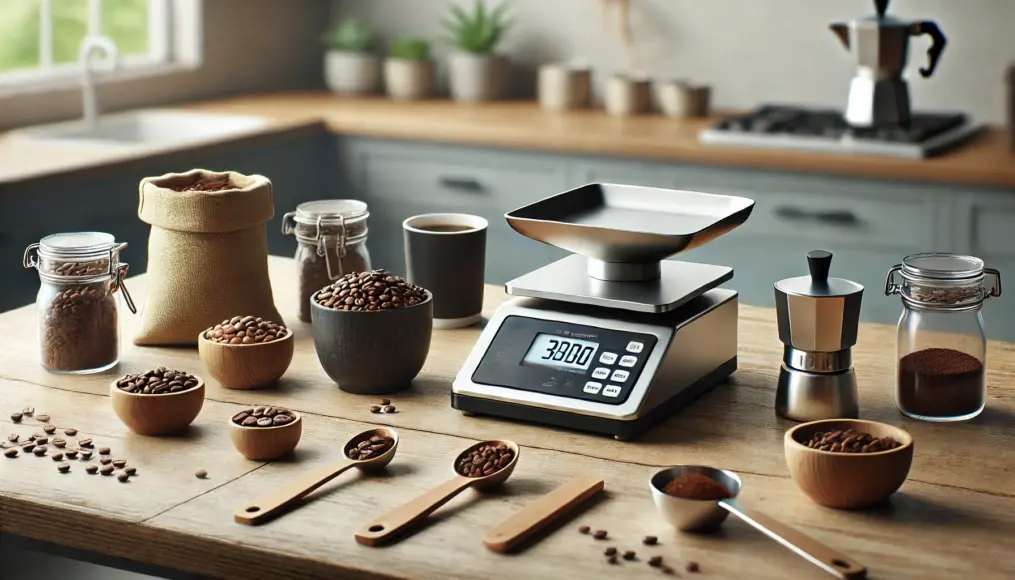When enjoying a cup of coffee, do you prefer a bright and tangy flavor?
Or are you more inclined toward a deep, rich bitterness?
The flavors of coffee beans vary greatly depending on their type, roast level, and origin.
Among these, acidity and bitterness stand out as key characteristics when choosing your ideal cup.
In this article, we will dive into the differences between beans with strong acidity and those with pronounced bitterness.
We’ll explore their unique charms, key features, and suggest which type suits various situations.
Additionally, you’ll find tips for beginners on selecting the perfect beans for their preferences.
Let’s uncover the secrets to finding your ideal coffee bean!
- Characteristics and origins of beans with strong acidity
- The traits of bitter beans and how roasting affects their flavor
- Brewing methods best suited to each type of bean
- Tips for beginners to choose the right coffee beans
- Factors That Determine Coffee’s Acidity and Bitterness
- How to Choose Coffee Beans with Strong Acidity or Bitterness
- Secrets to Enjoying the Balance Between Acidity and Bitterness
- Coffee Recipes Highlighting Acidity and Bitterness
Factors That Determine Coffee’s Acidity and Bitterness
Coffee’s acidity and bitterness are among the most crucial elements shaping its flavor profile.
These are not merely matters of preference; factors such as coffee bean variety, cultivation region, roast level, and brewing method all contribute significantly.
Understanding these elements helps identify the flavors that best suit your taste.
The Relationship Between Coffee Bean Varieties and Flavor
The variety of coffee beans is one of the major factors influencing flavor.
The Acidity of Arabica Beans
Arabica beans are known for their strong acidity and fruity flavors.
Grown in high-altitude regions, they experience significant temperature differences between day and night, fostering the formation of acidity-enhancing compounds.
Beans from Ethiopia and Kenya, for instance, exhibit citrus and berry-like fruity acidity.

The Bitterness of Robusta Beans
Robusta beans are characterized by their strong bitterness compared to Arabica beans.
This variety, grown at lower altitudes, has higher caffeine content, contributing to its bold bitter taste.
Robusta beans from Indonesia and Vietnam often have deep flavors reminiscent of chocolate and nuts.

Flavor Differences by Region
The origin of coffee beans greatly impacts their acidity and bitterness.
The Acidity of African Beans
Beans from Ethiopia and Kenya are known for their bright, fruity acidity.
These high-altitude regions produce beans with citrus and berry-like flavors, offering a vibrant taste experience.
African coffee is particularly popular among acidity lovers.

The Balance of South American Beans
Beans from Brazil and Colombia are well-balanced in acidity and bitterness.
These regions produce beans with smooth flavors reminiscent of nuts and caramel, appealing to a wide range of coffee drinkers.

The Depth of Asian Beans
Beans from Indonesia and Vietnam are known for their bold bitterness and rich body.
These beans pair well with milk and sugar, making them ideal for café au lait and cappuccino.
Their flavor intensifies when roasted dark.

Roast Levels and Flavor Adjustment
Roast levels significantly influence the balance of coffee’s acidity and bitterness.
The Brightness of Light Roast
Lightly roasted beans highlight acidity, offering a crisp and refreshing taste.
They are also characterized by fruity and floral aromas, making them perfect for pour-over brewing.

The Balance of Medium Roast
Medium roast beans achieve a harmonious balance between acidity and bitterness.
They are versatile and can be enjoyed using various brewing methods.

The Depth of Dark Roast
Dark roast beans have a rich bitterness reminiscent of caramel or dark chocolate.
They are ideal for espresso or café latte, offering a robust and satisfying aftertaste.

How to Choose Coffee Beans with Strong Acidity or Bitterness
When selecting coffee, two key flavor profiles—acidity and bitterness—play a crucial role.
These flavors differ greatly depending on the bean variety, cultivation region, roast level, and processing method.
Beans with strong acidity offer fruity and bright characteristics, while those with strong bitterness provide a rich and bold taste.
In this section, we delve deeper into their characteristics and how to choose the right beans for your preferences.
Characteristics and Selection of Beans with Strong Acidity
Beans with strong acidity are known for their vibrant flavors and citrus or berry-like notes.
They are ideal for those seeking a light and refreshing coffee experience.
These beans are commonly found in Arabica varieties with light roasts, especially from Ethiopia or Kenya.
Here, we explore in greater detail how to select beans with strong acidity.
Why Light Roasts Enhance Acidity
Light roasts bring out the natural acidity and aroma of coffee beans.
With shorter roasting times, the fruity and refreshing notes remain more prominent.
This makes light roasts particularly suited to acidic beans from African regions, allowing coffee enthusiasts to appreciate their complex flavors.
Look for packages labeled with light roast profiles when choosing such beans.

Ethiopian Coffee’s Acidity and Unique Character
Ethiopian beans are celebrated for their distinctive fruity acidity and floral aroma.
Beans processed using the natural method exhibit a full body and flavors reminiscent of raspberries or strawberries.
Regions like Sidamo and Yirgacheffe in Ethiopia produce beans with balanced acidity, making them ideal for beginners.
Their bright acidity is best enjoyed when served black.

Characteristics and Selection of Beans with Strong Bitterness
Beans with strong bitterness are prized for their deep and robust flavor profiles.
Such beans are typically found in Robusta varieties or dark-roasted Arabica beans, with notable origins in Indonesia and Brazil.
The roast level and bean variety greatly influence the nuances of bitterness.
Below, we examine the factors that enhance bitterness in coffee.
How Dark Roasts Highlight Bitterness
Dark-roasted beans develop pronounced bitterness through caramelization and the Maillard reaction during roasting.
This results in coffee with chocolate or caramel-like notes and a smooth texture.
Dark roasts suppress acidity, pairing exceptionally well with milk and sugar.
When selecting dark-roasted beans, look for labels such as “French Roast” or “Italian Roast.”

The Appeal of Indonesian Robusta Beans
Indonesia is known for producing high-quality Robusta beans.
These beans are particularly suited for espresso, retaining their flavor even when paired with milk.
Robusta beans have a high caffeine content and a strong, bold bitterness.
This makes them perfect for morning wake-ups or energy boosts.

Secrets to Enjoying the Balance Between Acidity and Bitterness
The acidity and bitterness of coffee each have their own unique charm.
When you can enjoy them in balance, it enhances not only the taste but also the aroma and aftertaste.
Here, we’ll explore specific tips and methods to harmonize acidity and bitterness in your coffee experience.
Exploring the Harmony Between Acidity and Bitterness
Understanding the characteristics of each coffee bean is essential for achieving harmony between acidity and bitterness.
For example, floral and acidic beans like Sidamo from Ethiopia pair exceptionally well with the rich, bitter beans from Brazil.
Additionally, the roast level affects how acidity and bitterness come through, so selecting your preferred roast is crucial.
When experimenting with blends at home, start with small quantities to avoid significant mistakes.
Finding the Golden Ratio for Blending
When blending coffee beans, discovering the golden ratio can significantly enhance the flavor.
For instance, a 50:50 balance between acidity and bitterness creates a smooth taste.
A 70% acidity and 30% bitterness ratio provides a refreshing aftertaste.
Try experimenting with various proportions to find the perfect blend for your taste.

Controlling Flavor Through Brewing Temperature and Time
To adjust acidity and bitterness, brewing temperature and time are key factors.
Low-temperature, slow brewing tends to highlight acidity.
Conversely, high-temperature, quick brewing emphasizes bitterness.
Aim for a water temperature of around 90°C as a baseline, and fine-tune the temperature and brewing time to match your preferences.
Tips for Using a French Press
When using a French press, coarsely ground beans with a longer brewing time enhance acidity.
Alternatively, finely ground beans with shorter brewing times bring out stronger bitterness for a more intense flavor.
Stirring lightly with a spoon after brewing helps evenly distribute the flavors.
These small adjustments can bring you closer to your ideal cup of coffee.

Adding Milk or Sugar for a Personal Touch
If the acidity or bitterness of coffee is too strong, adding milk or sugar can help balance the flavors.
Milk enhances the creaminess and richness of acidic coffee.
Sugar or honey can harmonize with bitter coffee, adding depth and sweetness.
These additions can transform a simple cup into a café-like experience at home.
Enhancing Flavors With Spices or Syrups
Adding cinnamon or nutmeg to coffee can expand its aroma.
A touch of caramel or vanilla syrup can turn your coffee into a dessert-like treat.
These accents work perfectly for creating special drinks when hosting guests.
Experiment to discover your favorite enhancements for your coffee moments.

Enjoying Food Pairings to Elevate Your Coffee Experience
Choosing foods that complement your coffee’s acidity or bitterness can enhance its taste.
Fruity desserts like tarts or yogurt pair well with acidic coffee.
Rich chocolate cakes or cheesecakes create a perfect match for bitter coffee.
Nuts or dried fruits also make for great snacks to pair with your coffee.
Exploring Coffee and Snack Pairings
Lemon-flavored cookies or light biscuits are ideal for acidic coffee.
Savory crackers or almonds balance the flavors of bitter coffee.
Finding these pairings adds an extra layer of enjoyment to your coffee routine.
Try various combinations to make your coffee time even more fulfilling.

Coffee Recipes Highlighting Acidity and Bitterness
Coffee is not only for drinking but also for enhancing various dishes and desserts.
Beans with strong acidity complement fruits, while beans with pronounced bitterness add depth to rich dishes and desserts.
Here, we introduce recipes that maximize the potential of both acidic and bitter coffee.
From beginners to seasoned enthusiasts, these ideas will help you discover new possibilities in coffee.
Desserts Utilizing Coffee Acidity
Coffee beans with strong acidity shine in dessert recipes.
When paired with citrus or berry fruits, their fresh flavors are accentuated beautifully.
Here, we suggest a chilled Ethiopian coffee jelly that pairs wonderfully with orange.
Ethiopian Coffee Jelly with Orange
Ethiopian coffee jelly brings out the citrusy freshness of orange.
When making the jelly, lightly sweeten the brewed coffee to let the acidity take center stage.
Top it with whipped cream for a perfectly balanced dessert.

Fruit Salad with Coffee-Infused Dressing
Add a twist to a cold fruit salad by drizzling a dressing made with acidic coffee.
Mix lemon juice, olive oil, and a touch of sugar, then incorporate coffee for a unique flavor experience.

Sophisticated Desserts with Coffee Bitterness
Coffee with strong bitterness pairs excellently with chocolate and nuts.
Here, we introduce rich brownie and tiramisu recipes that highlight the depth of bitter coffee.
Espresso Brownies
Incorporate espresso with strong bitterness into the brownie batter for a rich and flavorful treat.
Top with crushed nuts to add a delightful texture.

Espresso Tiramisu
Infuse tiramisu with a generous amount of espresso for a rich, adult-flavored dessert.
Finish with a dusting of cocoa powder to add a touch of elegance.

Balanced Coffee Drinks
Discover new taste experiences by combining acidity and bitterness in drinks.
For instance, adding citrus peel to dark-roast coffee creates a refreshing iced drink.
Citrus-Flavored Iced Coffee
Fill a glass with ice and pour dark-roast coffee over it.
Squeeze fresh orange peel on top to enhance the aroma.

Spiced Hot Coffee
Enhance dark-roast coffee with cinnamon or nutmeg to create a comforting hot drink.
The spice aromas elevate the bitterness, resulting in a delightful cup.

Dishes that Highlight Bitterness
Coffee with strong bitterness works wonderfully as a secret ingredient in savory dishes.
Here, we introduce a recipe for coffee-infused steak sauce.
Coffee Steak Sauce Recipe
Combine strongly brewed coffee with red wine and balsamic vinegar to create a robust steak sauce.
Drizzle it over your steak for a dish full of depth and character.

Enjoying the Unique Charms of Acidity and Bitterness
The acidity and bitterness in coffee each bring their own unique appeal.
The refreshing and fruity flavors of acidity, along with the depth and richness provided by bitterness, are key to enjoying coffee’s multifaceted nature.
By exploring recipes and balancing these features, you can elevate your daily coffee experience and discover new ways to savor your brew.
Which flavor profile do you prefer?
Or perhaps you’ll uncover something entirely new.
Feel free to share your coffee experiences in the comments!









































































Comment